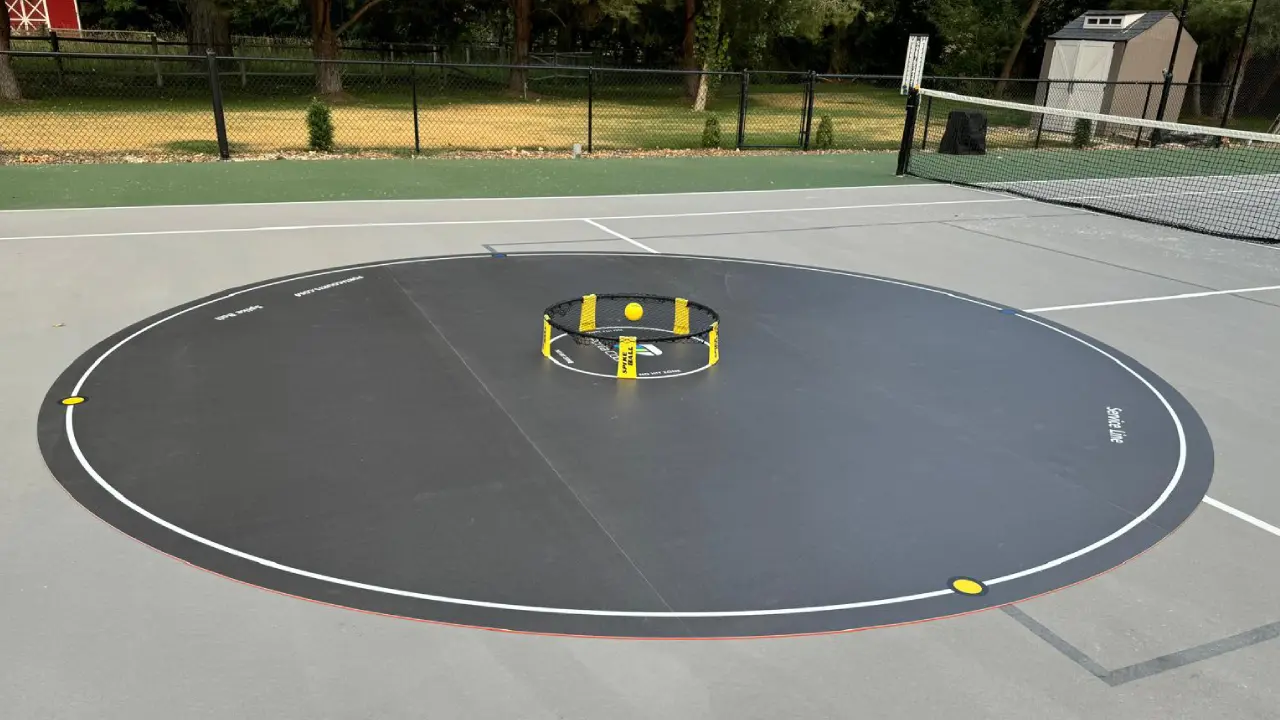Spikeball Court Flooring: Best Materials and Installation Tips
Hey! Spikeball lovers, have you ever thought that Spikeball Court Flooring matters a lot in gameplay? When I started playing Spikeball as a newbie, I just bought a court from a local store near me but after a few months, I realized my court was fading, its color gone and it became slippery which irritates me. Then I started learning every aspect that is true of the ideal Spikeball Court and I came up with my own brand PortaCourts. We provide the best court over the internet and established our brand globally, we deliver Spikeball and Pickleball courts worldwide. Now PortaCourts is the top choice of Spikeball and Pickleball customers.
Well, the point of this blog is that I will walk you through the main points that are essential for any type of court like which material courts are best and how to properly install a court, and my personal experience that I found during research and development.
Choosing The Right SpikeBall Court Flooring Matters
Choosing the right flooring for courts is essential for safety, durability, low maintenance cost, balanced friction during the game, water resistance, heat resistance, and enhanced gameplay. Here are some points that the right flooring should provide:
Even Bounce: Ensuring that the ball rebounds predictably off the ground.
Traction and Grip: It should prevent slipping and ensure that the player moves with the right friction between the shoes and the floor of the court, this is how an ideal court should act and PortaCourts takes care of it.
Shock Absorption: it should reduce the impact shock which is from a safety perspective. Which reduces the impact on the player's joints and muscles.
Weather Durability: In case of outdoor weather the ideal court should be weather resistant, the surface should withstand rain, heat, and snow.
Suggested Read: How to set up a spike ball net properly!
Best Materials for Spikeball Court Flooring
Before buying any court, you must know which material is used in manufacturing and what the pros and cons of that material are. Let’s find out:
1. Artificial Turf
Pros:
Provides a soft, cushioned surface that reduces joint stress.
Offers excellent traction and grip.
Durable and weather-resistant.
Cons:
May require maintenance such as brushing and cleaning.
Can become hot under direct sunlight.
Installation Tips:
Ensure proper drainage to prevent water accumulation.
Use a rubber underlay for added cushioning.
2. Concrete or Asphalt
Pros:
Durable and long-lasting.
Provides a smooth and even playing surface.
Ideal for permanent outdoor courts.
Cons:
Can be hard on players' knees and joints.
Becomes slippery when wet.
Installation Tips:
Apply a non-slip coating to improve traction.
Mark court boundaries with high-visibility paint.
3. Modular Sports Tiles
Pros:
Designed specifically for sports and high-impact activities.
Provides shock absorption and excellent traction.
Easy to install and maintain.
Cons:
Higher initial cost compared to other options.
May require periodic reinstallation if used frequently.
Installation Tips:
Choose UV-resistant tiles for outdoor use.
Ensure interlocking sections are securely fastened.
4. Rubber Flooring
Pros:
Provides excellent shock absorption.
Slip-resistant and comfortable for barefoot play.
Suitable for both indoor and outdoor courts.
Cons:
Can retain heat in sunny conditions.
Needs occasional cleaning to maintain grip.
Installation Tips:
Use thick rubber mats for better durability.
Ensure proper anchoring to prevent movement during play.
5. Grass (Natural Turf)
Pros:
Provides a soft and comfortable surface.
Absorbs impact and reduces injuries.
Ideal for casual and backyard play.
Cons:
Uneven surfaces may affect ball bounce.
Requires regular maintenance, such as mowing and watering.
Installation Tips:
Level the ground properly before setting up the court.
Avoid high-traffic areas to reduce wear and tear.
6. Sand Courts
Pros:
Soft, impact-absorbing surface is ideal for casual and beach play.
Natural look and feel, making games more fun and dynamic.
Reduces injuries and joint stress due to its cushioning effect.
Cons:
Requires frequent maintenance to prevent hard spots and unevenness.
Sand may stick to the ball, affecting gameplay.
Difficult to move quickly compared to hard surfaces.
Installation Tips:
Use fine-grain, washed sand for the best playing surface.
Rake the sand regularly to maintain evenness.
Install boundary lines with anchored markers for visibility.
Do you know what a pocket rule is in Spikeball? Read here!
Installation Tips for Spikeball Courts
Setting up a Spikeball court correctly ensures better gameplay and longevity. Here are some essential installation tips:
1. Level the Surface
Uneven ground can lead to inconsistent bounces.
Use a leveler for natural surfaces like grass or sand.
For concrete or modular tile setups, ensure a flat foundation.
2. Choose the Right Dimensions
Standard Spikeball courts have a 30ft x 30ft play area.
Mark the serving lines and out-of-bounds zones clearly.
3. Improve Traction and Safety
Use non-slip coatings on hard surfaces.
Regularly clean the surface to remove debris and dust.
For artificial turf or rubber flooring, check for wear and replace worn sections.
4. Consider Portability
If you want a movable court, opt for modular tiles or rubber flooring.
Portable flooring allows you to set up Spikeball games anywhere.
5. Weatherproofing
Outdoor courts should have UV-resistant materials to prevent fading.
Ensure proper drainage to avoid water buildup on rainy days.
Cover the court when not in use to extend its lifespan.
6. Enhancing the Court Experience
Use LED lighting for night games: If you plan on playing in the evening, consider installing portable LED lights.
Boundary markings: Clearly defined boundaries help avoid disputes and make the game more structured.
Court fencing: For permanent courts, a low fence can help prevent the ball from rolling away.
7. Maintenance Tips for Longevity
To ensure your Spikeball court flooring lasts, follow these maintenance guidelines:
Artificial Turf: Brush regularly and remove debris to keep fibers standing upright.
Concrete/Asphalt: Reapply anti-slip coatings and repaint court lines annually.
Rubber Flooring: Sweep and mop with mild soap to maintain grip.
Modular Tiles: Inspect for loose tiles and secure them before gameplay.
Sand Courts: Rake the sand and add fresh layers when necessary.
Final Thoughts
Both newbies and rally players can have a safe, interesting, and enjoyable gaming experience on a well-designed court. Whether you decide to set up your court in your backyard, on the beach, in an indoor sports complex, or in an arena used for professional tournaments, the spike ball flooring you choose will have a big impact.
We also have explained spikeball serve rules that you should know for better understanding of the game. Give it a read, and subscribe to PortaCourts' Newsletter for more updates!
COMMENTS
Sort by :





Leave A Comment